Database Schema Design Tool Sql Server
Database Diagram (ERD) Design Tool for SQL Server
dbForge Studio for SQL Server comes with an advanced ER diagram design tool aimed at designing database schema diagrams and visualizing your database as an Entity Relationship Diagrams (ERD). dbForge Database Diagram Designer combines Database Diagram, Database Modeling, and Table Designer utilities to help you effectively perform various database tasks.
With our ERD diagram tool, you can:
- Visualize database structure for further analysis
- Use containers to cluster logically related objects
- Inspect logical relations between tables
- Print out large SQL database diagrams
- Create and edit database objects on a diagram
- Reverse engineer database diagrams
Creating a Database Diagram
You can create a new SQL Server database diagram by simply dragging your database objects from Database Explorer to the diagram. Your new SQL database diagram will reflect all the objects and existing connections simplifying further analysis.
Navigating the diagram is easy, just use the scrollbars, a mouse, or in-built navigation utilities. You can zoom in and out the diagram to simplify the navigating.
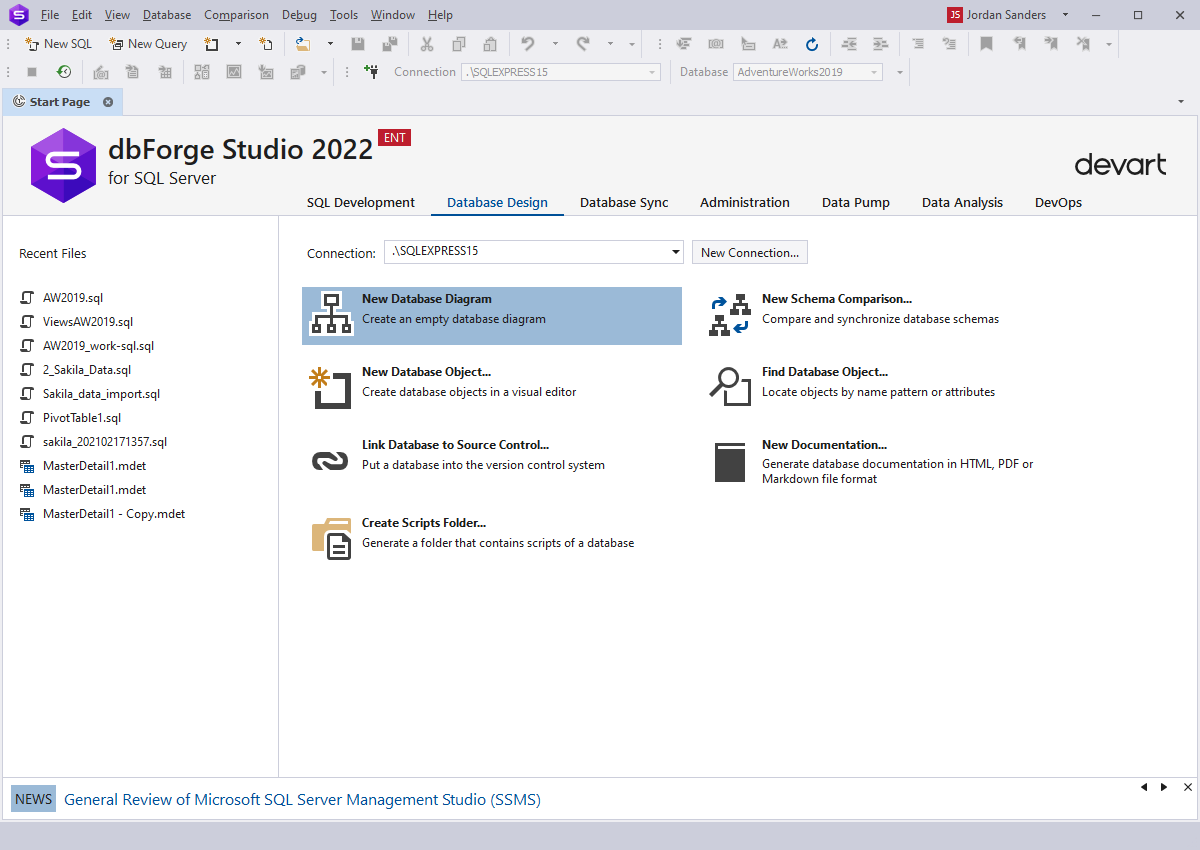
Database Diagram Visualization Tools
With dbForge Database Diagram Tool, you can customize diagram visualization to fit your needs.
Notations. You can choose between two common data modeling notations:
- Information Engineering (IE)
- IDEF1 Extended (IDEF1X)
Relation comments. You can either enable or disable the rendering of foreign key names near the relation child ends.
Document outline window displays a logical structure of the currently open SQL diagram. You can use it to navigate between tables and their relations on a database diagram.
Other visualization options. You can hide constraints, indexes, and triggers compartments, change their field detail level to display only column names, names with types, or names with full types.
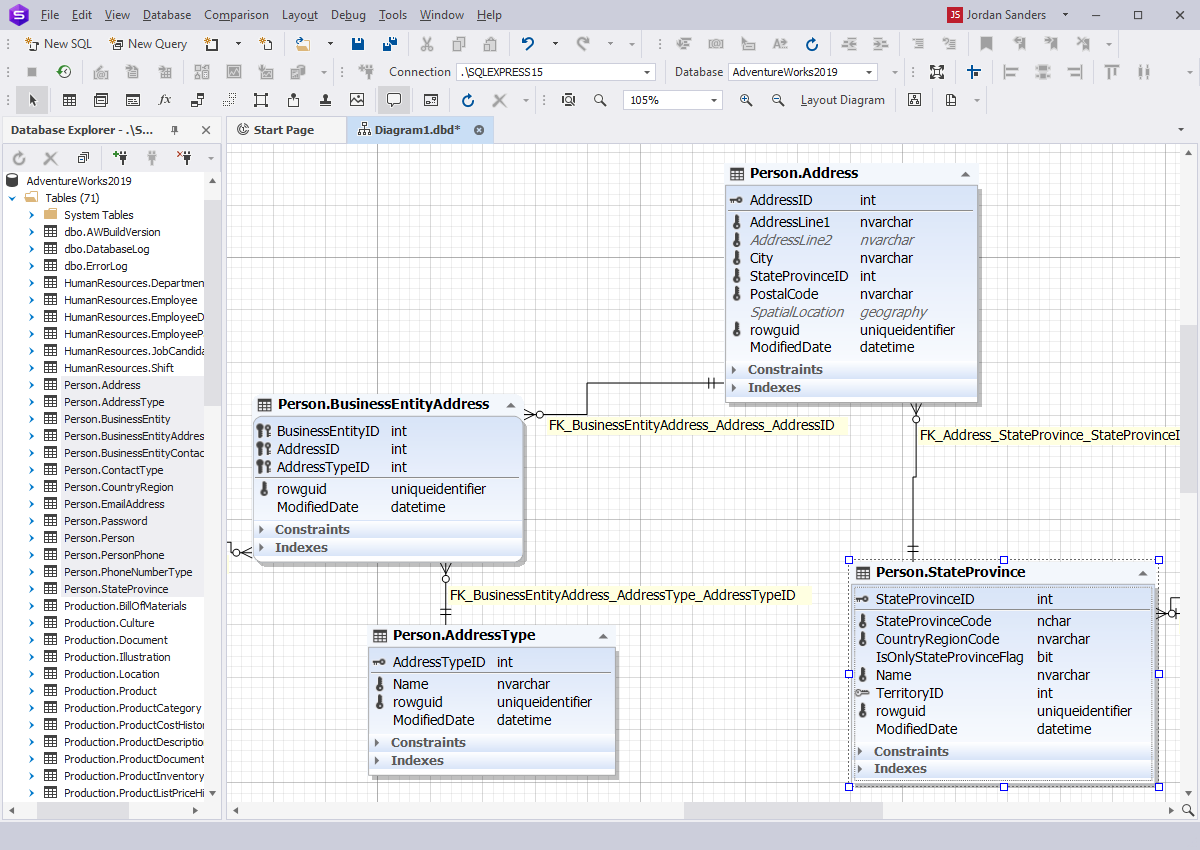
Clustering logically related objects using containers
When you work with a large SQL database diagram, a container allows you to store logically related objects in one place. You can create a new container, add the related tables, rename the container, and then collapse it.
Containers offer a logical packaging mechanism to clarify the structure of complex diagrams and are ideal for those working with large databases.
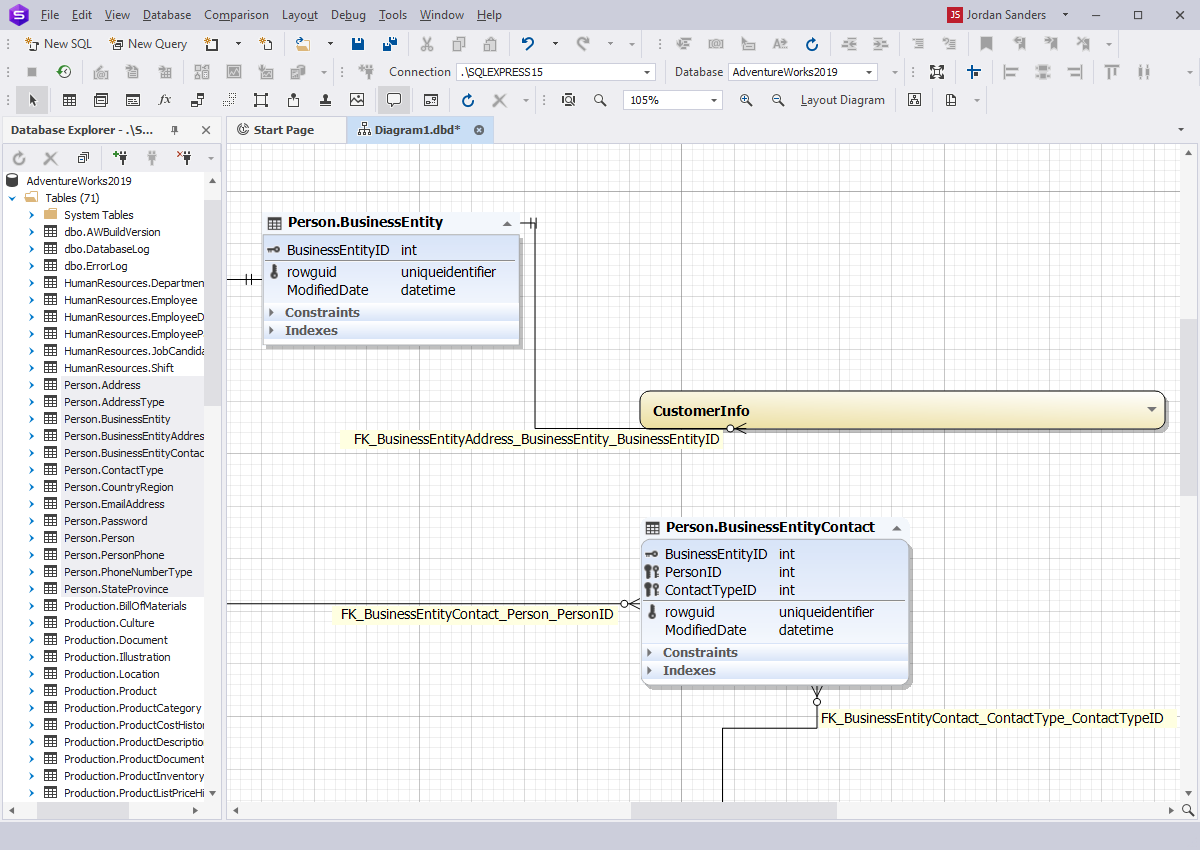
Tracking logical relations between tables
Virtual relations
- Allow you to visualize logical relations between tables
- Do not exist physically and are only stored on the diagram
- Can be used to simplify the visual analysis of the data
- Can be materialized further into a physical relation
Virtual relation manager contains a list of the existing virtual relations and enables you to:
- Edit the existing virtual relations
- Generate a schema script taking into account selected virtual relations, edit the script, and execute it to update a database
- Convert a virtual relation into a foreign key

Printing a database diagram
Page options allow you to set the following page settings:
- Page orientation
- Paper size and source
- Printing margins and overlapping
- Header and footer text
Display print markup displays the print markup grid. Gray stripes show the page overlapping, which can be adjusted.
Print options allow you to:
- Position a printed image in the center
- Adjust diagram scale
- Set up printing of the page markup that helps to cut and glue together a SQL diagram printed on several sheets
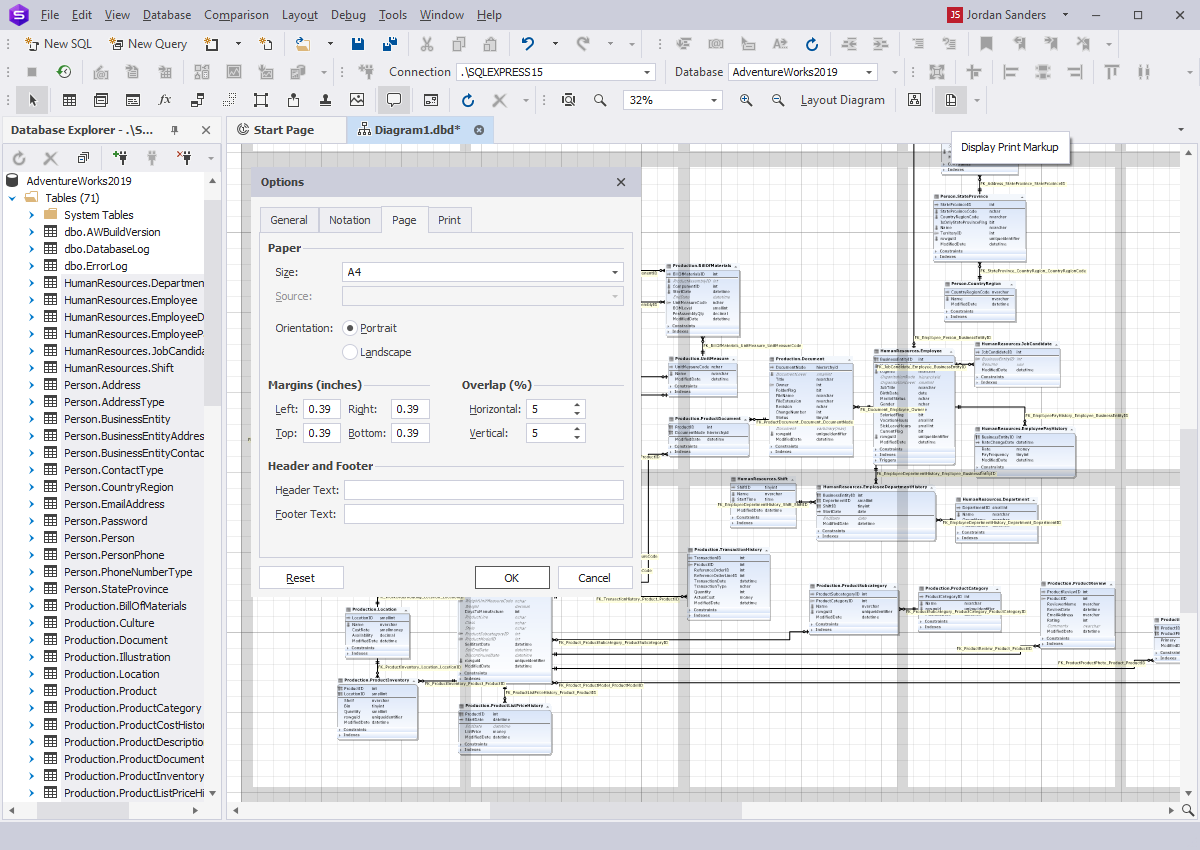
Creating and editing database objects on a diagram
To access the Creating and editing relations option, right-click the line between two entities in the diagram area and perform the following tasks:
- Edit a foreign key using the foreign key editor
- Find a foreign key in Database Explorer
- Synchronize with document outline window
- Reroute a relation
- Show a relation comment
Creating and editing objects. You can create new database objects or edit the existing ones on the diagram area. All the changes you have made to an object on a diagram are permanent and stored on the server.
The Note feature allows you to add comments to the diagram area while designing or analyzing a database structure. You can also add hyperlinks to other resources inside your note. For instance, a hyperlink to wiki pages with database documentation.
The Stamp feature displays the information about a database diagram and serves to identify a printed copy of the document.
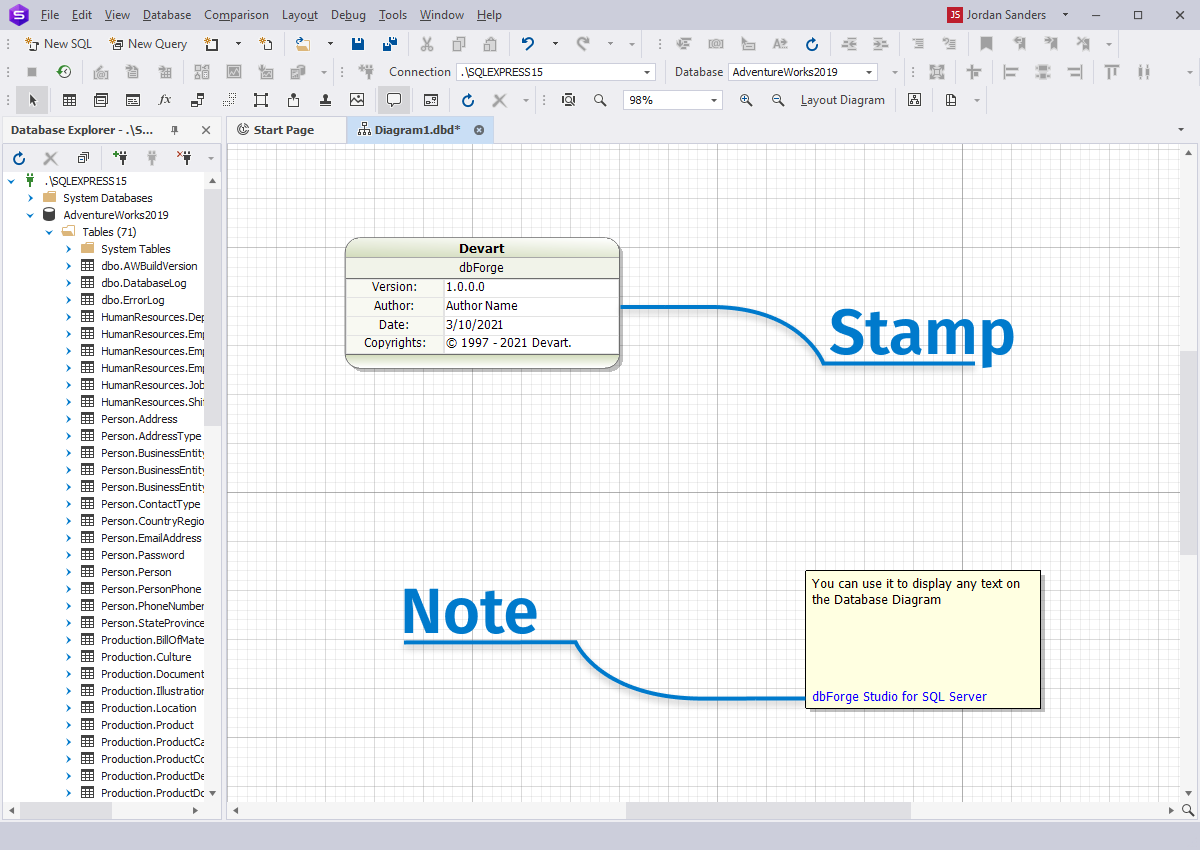
The Adding an arbitrary image to a diagram feature allows you to add additional visual information to the diagram area, such as a diagram sketch, or draft.

Searching text on the Database Diagram
dbForge Database Diagram Designer supports searching database object shapes by text, by their names, and names of their elements (columns, constraints, stored routine parameters, etc.). Search can also be performed in the stamp company name and project name fields, notes, relation comments, and container names.
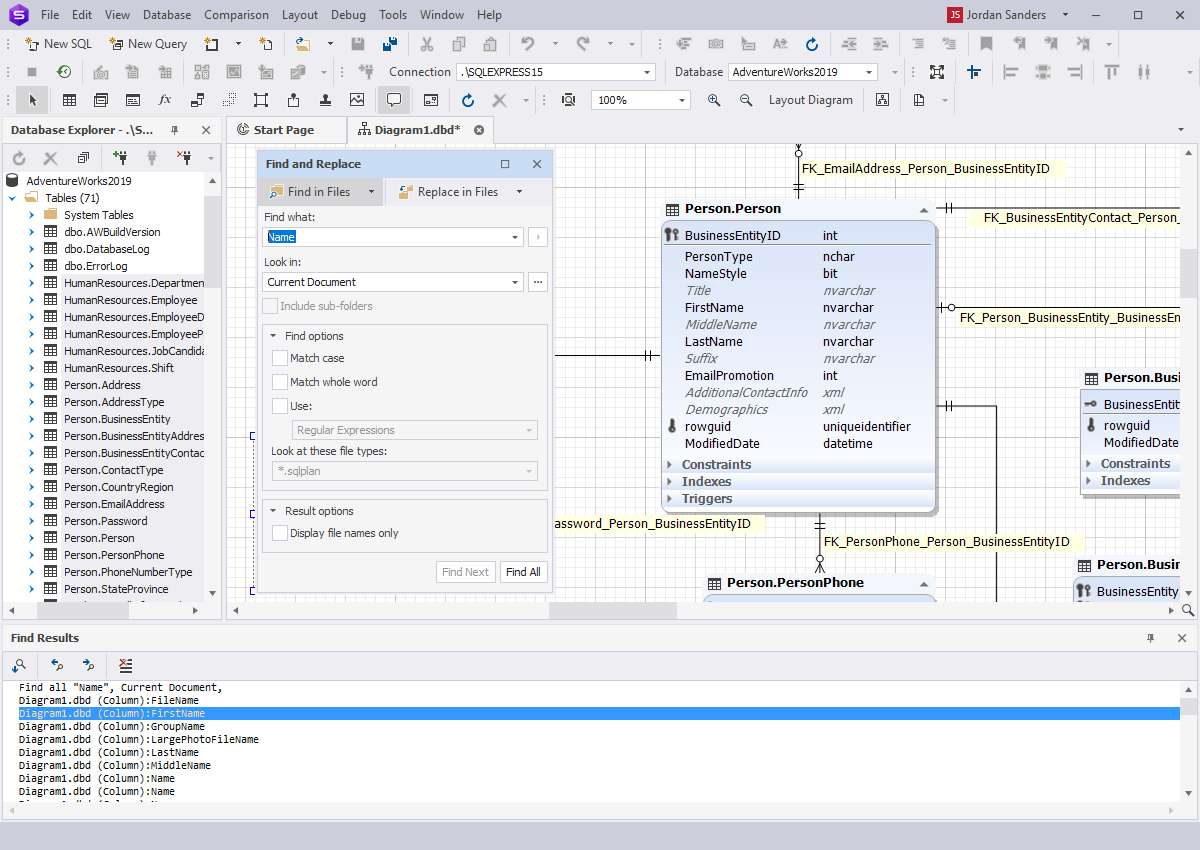
Using additional diagram elements
Notes. Notes are yellow boxes with the text you can add to the diagram to explain some diagram parts. Notes can be moved, brought to front or sent to back, or resized like any other shapes on the diagram.
Hyperlinks. The note allows adding a hyperlink to a file if required.
Stamps. Diagram stamp enables you to specify the following information about the diagram: diagram author, company, version, copyrights, project name, and date. You can add as many stamps to your diagram as you want.
Images. dbForge Studio allows adding images to your database relationship diagram. Images can be moved, brought to front, sent to back, or resized like any other shapes on the diagram. You can use the following image formats:
- BMP
- JPEG
- TIFF
- PNG
- ICO
- EMF
- WMF
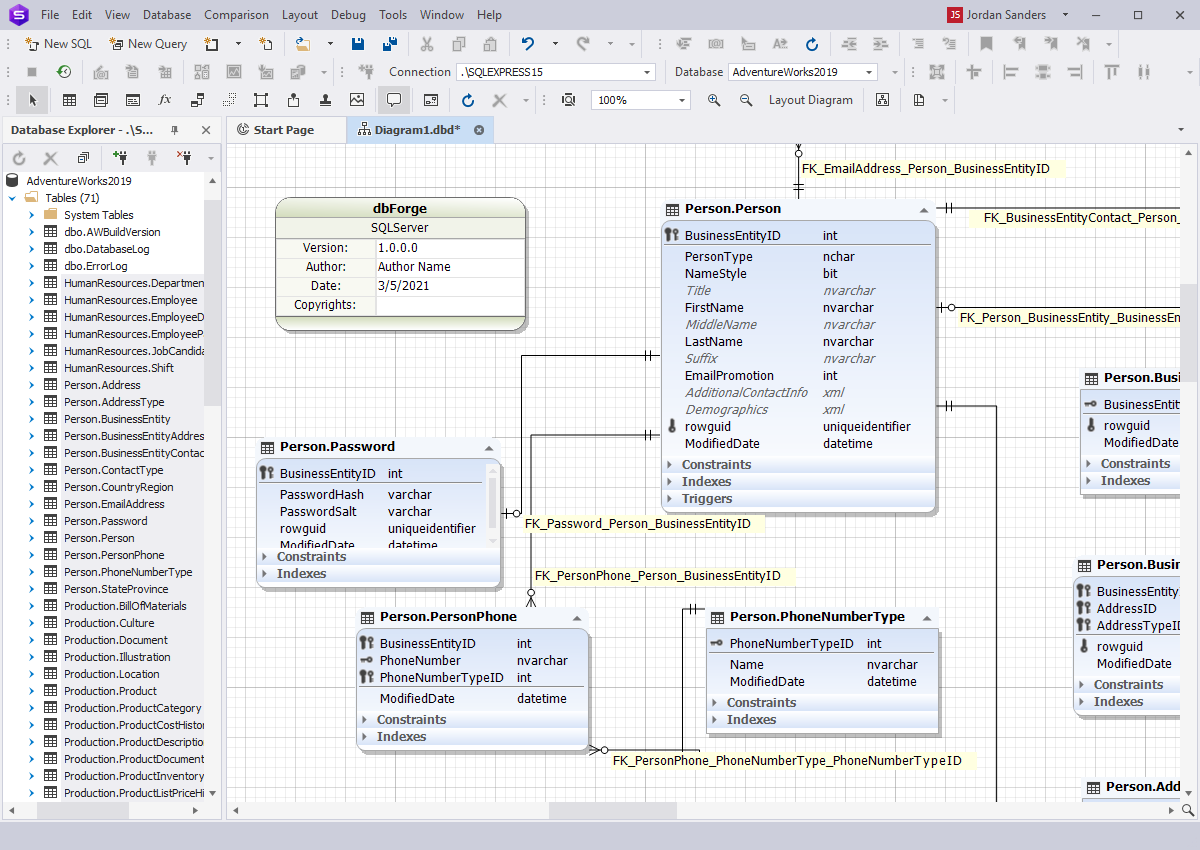
Using reverse engineering to create database models from existing databases
With dbForge Studio for SQL Server, you can easily export database schemas. Invoke the Generate Scripts Wizard from the Database menu > Tasks > Generate Scripts. After setting the required connection and database, specify the path and file name for the output, set up a few other options, and click Generate to launch the generation.
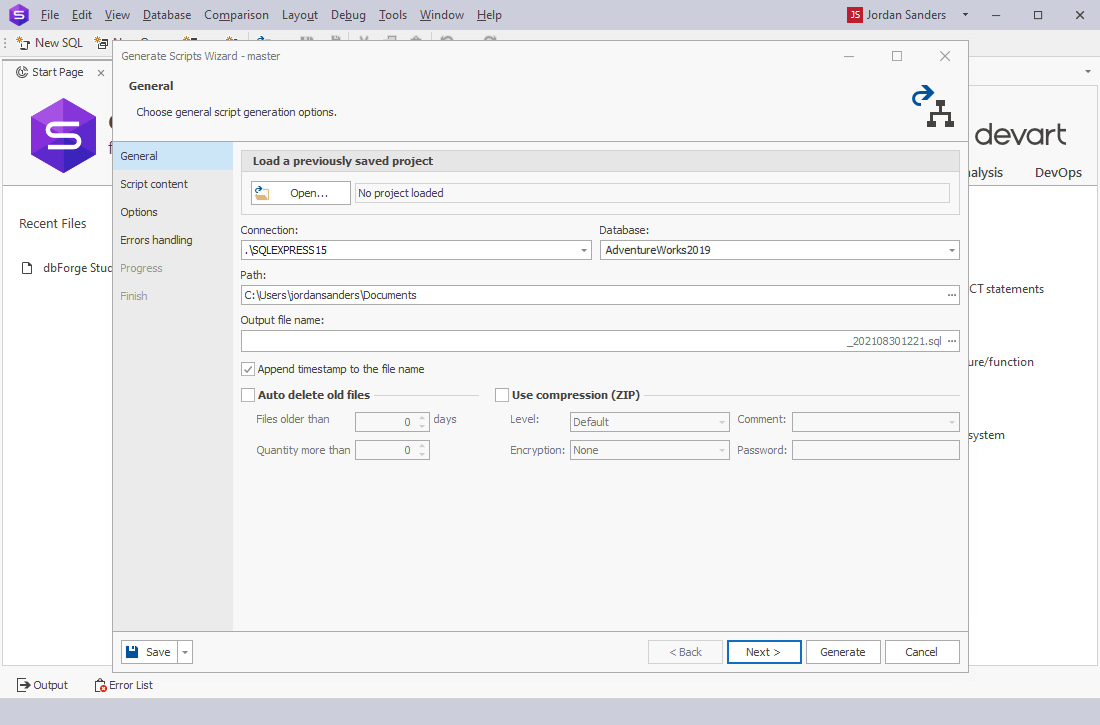
You can also create a scripts folder or a snapshot using the Studio. The former is a set of scripts that represent your database schema. The latter is a file that contains information about the structure of your database in XML. Invoke the Create Scripts Folder or Snapshot dialog box from the Database menu > Tasks > Create Scripts Folder or Snapshot. Select the required source type (database or snapshot) and specify the connection and the database (or the path to your snapshot). Along with a couple of auxiliary configurations, you set the path to store your scripts folder/snapshot file and click Create to launch the generation.
For your convenience, the generation of scripts folders and snapshots can be automated via the command-line interface using the Save Command Line button.
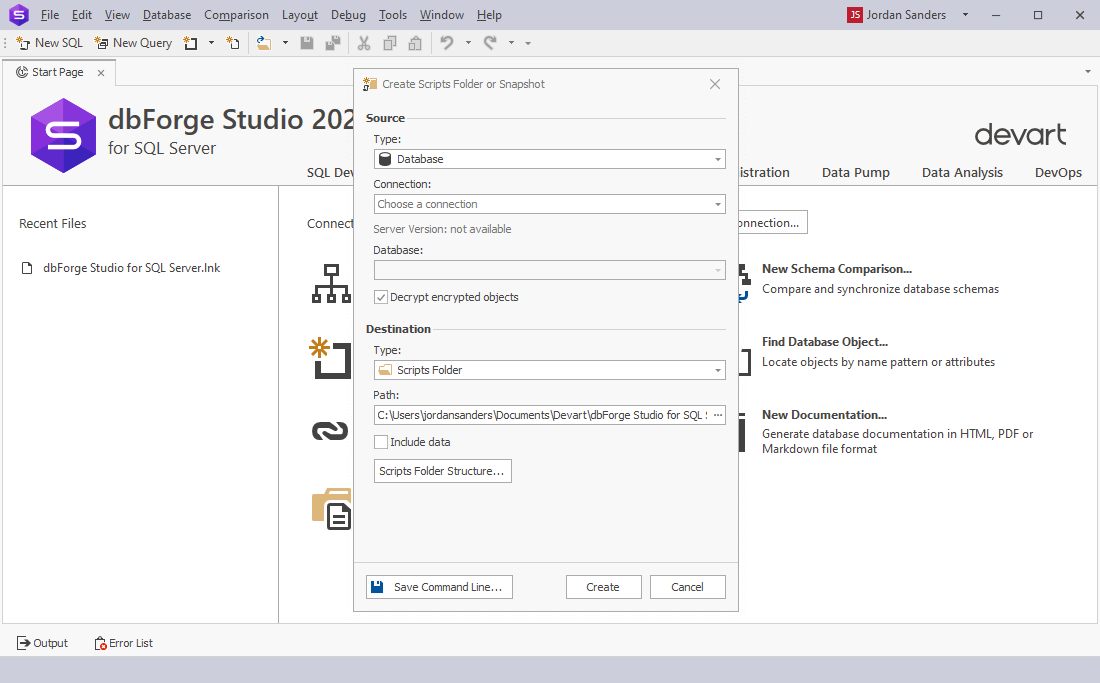
Database Schema Design Tool Sql Server
Source: https://www.devart.com/dbforge/sql/studio/database-diagram.html
Posted by: tauntonbutial.blogspot.com

0 Response to "Database Schema Design Tool Sql Server"
Post a Comment